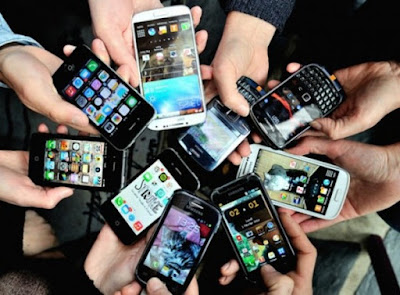1G Technology:
- 1G refers to the first generation of wireless telephone technology, mobile telecommunications which was first introduced in 1980s and completed in early 1990s.
- It’s Speed was upto 2.4kbps, allowed the voice calls in 1 country.
- It used Analog Signal and AMPS was first launched in USA in 1G mobile systems
- Poor Voice Quality
- Poor Battery Life
- Large Phone Size
- No Security
- Limited Capacity
- Poor Handoff Reliability
2G Technology:
- 2G technology refers to the 2nd generation which is based on GSM.
- It was launched in Finland in the year 1991 and used digital signals.
- It’s data speed was upto 64kbps.
- It enables services such as text messages, picture messages and MMS (multimedia message).
- It provides better quality and capacity.
Drawbacks:
- 2G requires strong digital signals to help mobile phones work. If there is no network coverage in any specific area ,digital signals would weak.
- These systems are unable to handle complex data such as Videos.
3G Technology:
- 3G technology refer to third generation which was introduced in year 2000s.
- Data Transmission speed increased from 144kbps-2Mbps.
- Typically called Smart Phones and features increased its bandwidth and data transfer rates to accommodate web-based applications and audio and video files.
- Providing Faster Communication
- Send/Receive Large Email Messages
- High Speed Web / More Security
- Video Conferencing / 3D Gaming
- TV Streaming/ Mobile TV/ Phone Calls
- Large Capacities and Broadband Capabilities
- 11 sec – 1.5 min. time to download a 3 min Mp3 song.
Drawbacks:
- Expensive fees for 3G Licenses Services
- It was challenge to build the infrastructure for 3G
- High Bandwidth Requirement
- Expensive 3G Phones.
- Large Cell Phones
4G Technology:
- 4G technology refer to or short name of fourth Generation which was started from late 2000s.
- Capable of providing 100Mbps – 1Gbps speed.
- One of the basic term used to describe 4G is MAGIC.
- Mobile Multimedia
- Ubiquitous
- Global Mobility Support
- Integrated Wireless Solution
- Customized Personal Services
- Also known as Mobile Broadband Everywhere
- The next generations of wireless technology that promises higher data rates and expanded multimedia services.
- Capable to provide speed 100Mbps-1Gbps.
- High QOS and High Security
- Provide any kind of service at any time as per user requirements, anywhere.
Features Include:
- More Security
- High Speed
- High Capacity
- Low Cost Per-bit
Drawbacks:
- Battery uses is more
- Hard to implement
- Need complicated hardware
- Expensive equipment required to implement next generation network.
The basic difference between 3G and
4G
Technology
|
3G
|
4G
|
Data
Transfer Rate
|
3.1 MB/sec
|
100 MB/sec
|
Internet
Services
|
Broadband
|
Ultra-Broadband
|
Mobile
– TV Resolution
|
Low
|
High
|
Bandwidth
|
5-20
MHz
|
100MHz
|
Frequency
|
1.6-2 GHz
|
2-8 GHz
|
Download
and upload
|
5.8 Mbps
|
14 Mbps
|
5G Technology
- It refers to short name of fifth Generation which was started from late 2010s.
- Complete wireless communication with almost no limitations.
- It is highly supportable to WWWW (Wireless World Wide Web)
Features Include:
- High Speed, High Capacity
- 5G technology providing large broadcasting of data in Gbps .
- Multi – Media Newspapers, watch T.V programs with the clarity as to that of an HD Quality.
- Faster data transmission that of the previous generations.
- Large Phone Memory, Dialing Speed, clarity in Audio/Video.
- Support interactive multimedia ,voice, streaming video, Internet and other
- 5G is More Effective and More Attractive




